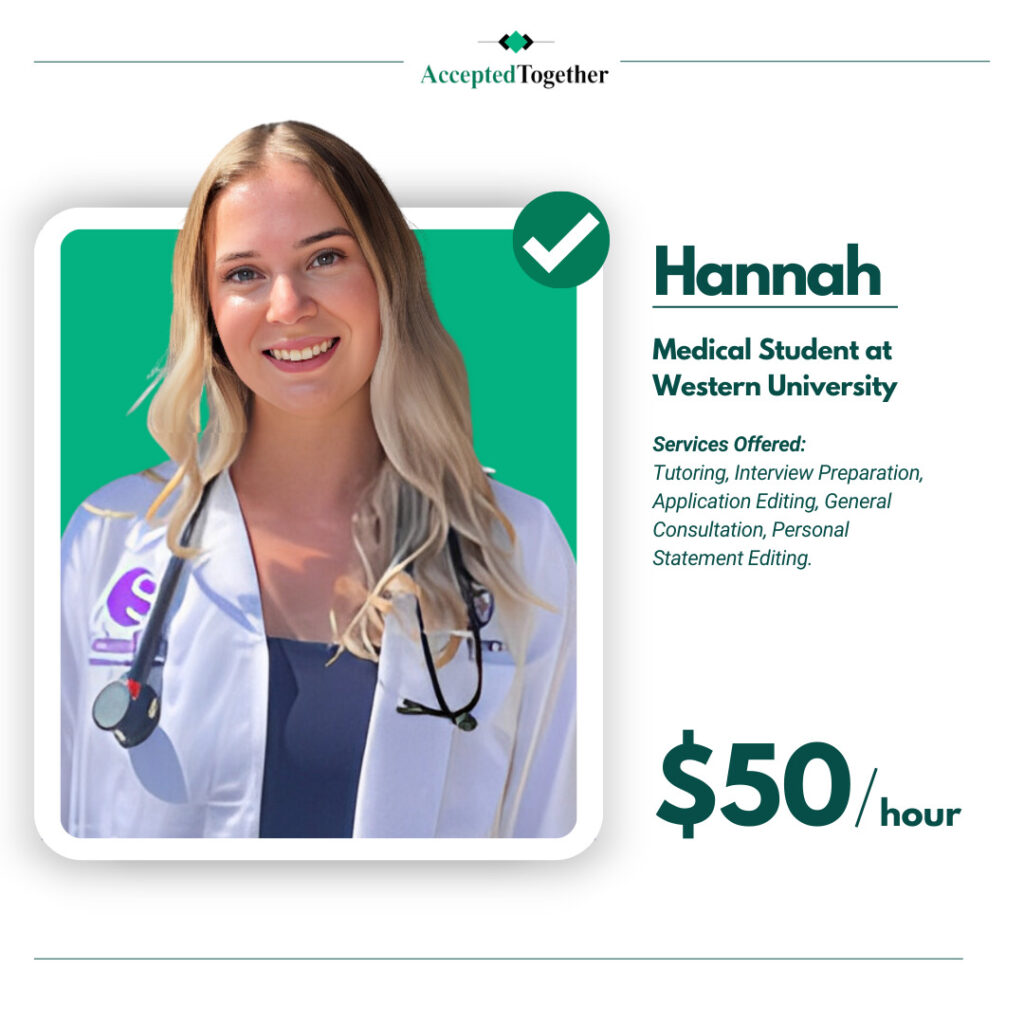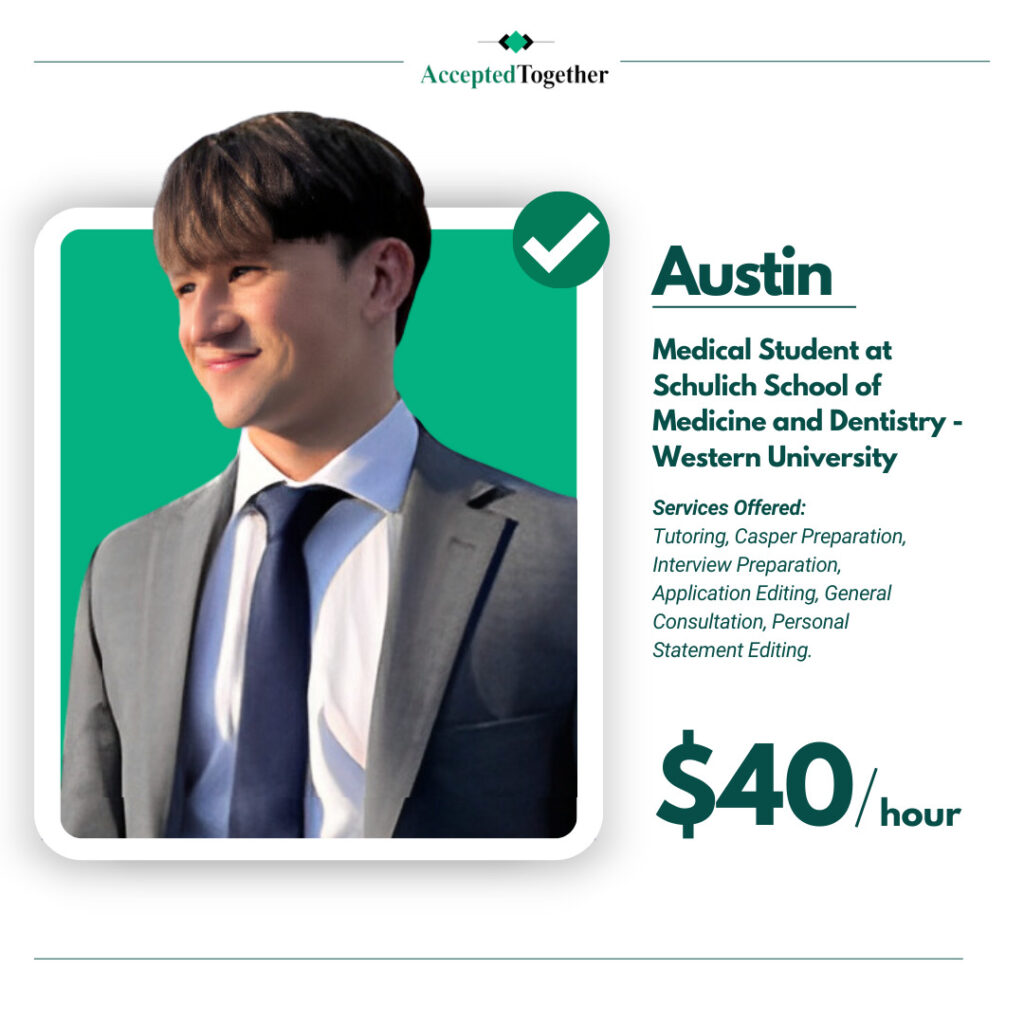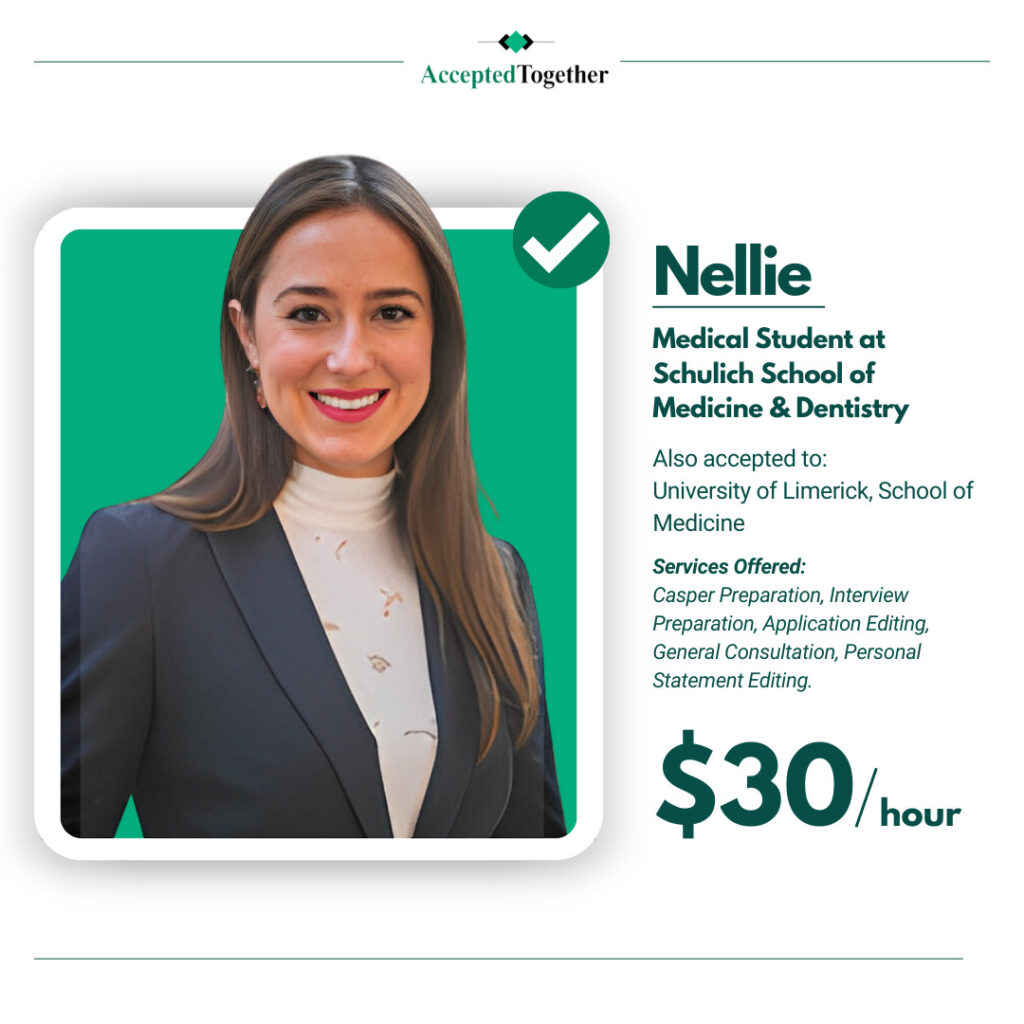
Table of Contents
Introduction
In the fiercely competitive world of medical school applications, the tiniest details can make a big difference. Enter the letter of intent – your secret weapon to stand out from the crowd. For many aspiring doctors, this document is the unsung hero of their application package, serving as a testament to their commitment and genuine enthusiasm for a specific medical school.
Yet, drafting a Letter of Intent that resonates is more of an art than an exact science. We’re diving deep into the nuances of this critical document, shedding light on its purpose, key elements, and pitfalls to sidestep. Whether you’re attempting to pen your very first Letter of Intent or refining a draft, this guide promises a treasure trove of insights. Beyond mere guidelines, we aim to elevate your approach, transforming this document from a simple statement of intent to a compelling narrative. So, gear up! In a realm where every word counts, discover how to channel your passion, experiences, and aspirations into a Letter of Intent that genuinely shines.
Click to see hundreds of consultants who can mentor you:


Understanding the Letter’s Purpose
In the intricate dance of medical school applications, the Letter of Intent serves as a unique step, signaling your genuine interest in a program. It isn’t just another letter; it’s a strategic tool, underlining your unwavering commitment to a specific institution. Before diving into crafting one, it’s imperative to grasp its core purpose, which essentially revolves around affirming your dedication and shedding light on why a particular program is your top choice.
Differentiating between the Letter of Intent and the Letter of Interest
In the lexicon of application terminologies, terms like “Letter of Intent” and “Letter of Interest” often crisscross. But in the realm of medical school admissions, these distinctions matter.
The “Letter of Intent” is your bold statement, declaring that, if given an acceptance offer, you would choose their program above all others. Think of it as placing all your cards on the table, revealing your hand that this school is your number one pick. In essence, it’s your pledge of allegiance to a specific school.
On the flip side, the “Letter of Interest” treads a less definitive path. While it resonates with genuine intrigue for a program, it stops short of making that absolute commitment. It’s like telling a school, “I’m profoundly interested, but I’m still evaluating my options.” A Letter of Interest asserts your keenness but doesn’t tie you down with an unequivocal promise.
This differentiation is crucial, as it informs the tone, content, and gravity of your message. Misunderstanding or misrepresenting these could have detrimental effects on your application, painting you as either insincere or uninformed. Knowing the nuanced differences is your first step to navigating this terrain with dexterity.
The primary goal: Showcasing commitment and enthusiasm
When penning down a Letter of Intent, it’s easy to get lost in the quagmire of wanting to impress. However, your primary objective should be crystal clear: to show genuine commitment and unbridled enthusiasm for the program.
How does one achieve this without sounding cliché or disingenuous? It’s a balancing act. First, your experiences and objective facts about your profile should be at the forefront. By recounting specific interactions, like an enlightening conversation with a faculty member or an inspiring tour of the campus, you make your enthusiasm palpable. These anecdotes serve as evidence of your genuine interest and show that you’ve deeply engaged with the institution beyond surface-level research.
However, while enthusiasm is a potent tool, it’s essential not to overdo it. There’s a fine line between genuine excitement and desperate flattery. Let your experiences and the objective strengths of the program do the talking. After all, medical schools are looking for candidates who have a clear understanding of what their program offers and how it aligns with the student’s career and personal aspirations.
As you venture into crafting your Letter of Intent, always remember: it’s not just about expressing interest; it’s about showing that you’ve thought deeply about your choice, understand the program’s unique offerings, and are ready to commit wholeheartedly. With clarity on these aspects, you’ll be well on your way to creating a Letter of Intent that resonates powerfully with admissions committees.
Key Elements of an Effective Letter
When crafting a piece as decisive as the Letter of Intent, precision and aptitude matter. Like a puzzle, every component of this letter, from the opening gambit to the closing remarks, plays a critical role in painting a comprehensive image of your genuine interest. To master the art of creating a powerful Letter of Intent, it’s essential to understand the key components that fuse together to make it compelling. Here’s the blueprint:
Opening
Diving straight into the mechanics, the *opening* of your Letter of Intent is not merely a formality. It’s the hook, the attention-grabber. First impressions matter, and in the realm of medical school applications, you may only get one shot at capturing the reader’s attention. To strike the right chord, begin with a vivid recollection, perhaps recalling an impactful experience or interaction that underscores your keen interest in the institution. This is your initial play, so ensure it’s sincere, impactful, and establishes the context of your engagement with the school.
Body
The *body* is where the magic happens. It’s the substantial meat of your Letter of Intent, presenting your case with clarity and verve. Start by detailing your academic accomplishments, research endeavors, or clinical experiences that align perfectly with the institution’s offerings. Remember, you’re not just listing achievements; you’re weaving a narrative that indicates a harmonious fit with the program.
Within this narrative, specificity is your ally. Illustrate your experiences with the program or any interactions that left an indelible mark. Did a seminar by a renowned professor intrigue you? Or maybe a certain curriculum facet stands out as a perfect match for your aspirations? These detailed recounts not only exhibit your genuine interest but also show that you’ve done your homework.
A crucial tactic in the body is to balance between the professional and the personal. Medical schools want more than just stellar students; they seek holistic individuals. Highlight personal experiences or aspirations that align with the school’s ethos or mission. Perhaps a particular community outreach program of the school resonates with your personal journey, or their emphasis on holistic patient care echoes your philosophy. These are the intricate layers that transform a good Letter of Intent into a great one.
Closing
Now, to tie it all together – the *closing*. Contrary to popular belief, the conclusion of your Letter of Intent isn’t a mere formality; it’s your parting shot, an opportunity to reiterate your strong desire to be a part of the institution. While it’s essential to be genuine and sincere, ensure you also convey a sense of commitment and vision. Paint a vivid picture of your future there, showcasing how your ambitions align with their offerings. As you sign off, your aim is to leave the admissions committee with a lingering sense of your passion, making your application unforgettable.
In the high-stakes arena of medical school applications, an expertly crafted Letter of Intent can be your ace in the hole. By mastering its structure and honing its content, you’ll be setting the stage for a lasting impression.
Common Pitfalls to Avoid
Stepping into the intricate world of medical school applications, the Letter of Intent stands as your symbolic handshake with the admissions committee. While it’s pivotal to highlight your strengths and affinities, it’s equally crucial to be aware of pitfalls that could dampen the impact of your letter. The path to creating an influential Letter of Intent is riddled with potential mistakes, but by being alert, you can navigate them with ease. Let’s delve into some of these traps.
Overconfidence and arrogance
Treading the line between confidence and arrogance in your *Letter of Intent* can be a delicate dance. While showcasing accomplishments is essential, trumpeting them without humility can raise eyebrows. It’s the classic blunder of mistaking confidence for arrogance. Sure, you might have a stellar GPA or research credentials that are through the roof, but remember – medical schools are not just looking for achievers; they’re scouting for team players, compassionate caregivers, and future leaders. Rather than merely listing accolades, connect them to your growth, experiences, or lessons learned. Ground your achievements in humility, showing appreciation for opportunities and collaborations.
Overly dramatic or emotional content
While it’s commendable to show passion and drive in your *Letter of Intent*, diving deep into melodrama can seem inauthentic. The committee reads hundreds of letters, and an overly emotional narrative can seem more theatrical than genuine. Instead of overemphasizing struggles or personal challenges, focus on resilience, growth, and the positive outcomes derived from such experiences. Emotional intelligence is vital in the medical field, so exhibit it by balancing passion with pragmatism in your letter.
Sending letters of intent to multiple schools
In the competitive arena of medical school admissions, you might feel the urge to cast a wide net by sending a Letter of Intent to numerous institutions. However, this approach can backfire. When a school receives your Letter of Intent, they interpret it as a commitment that you’ll attend if accepted. Distributing this commitment far and wide diminishes its value. It’s akin to overplaying your hand in a high-stakes poker game. Research each institution meticulously and send your Letter of Intent only to your top choice, showcasing genuine interest.
Exceeding the recommended length
In the bid to create the perfect *Letter of Intent*, there’s a tendency to pen down every single thought, making it excessively long. But brevity is the soul of wit. Admissions committees go through countless applications, and a letter that’s lengthy and tedious can quickly find its way to the bottom of the pile. Stick to the recommended length, ensuring your content is concise, impactful, and directly speaks to your aspirations and fit with the institution.
Crafting a compelling Letter of Intent is as much about what you should include as what you should avoid. By sidestepping these common pitfalls, you’ll be positioning yourself as a genuine, well-rounded candidate, ready to make a lasting mark in the medical fraternity.
Click to see hundreds of consultants who can mentor you:


Timing and Delivery
In the bustling realm of medical school applications, your Letter of Intent isn’t just about what you say; it’s also about when and how you say it. Much like releasing a product in the market or launching a marketing campaign, the timing and delivery of your *Letter of Intent* can significantly sway its impact. In this crucial component of the application process, let’s understand the best strategies to ensure your letter not only lands in the right hands but also at the right time.
The ideal time: One month post-interview
When it comes to sending out your *Letter of Intent*, patience is truly a virtue. Ideally, the sweet spot to dispatch this significant document is about a month after your interview. This timeframe allows you to reflect upon the interview experience, the school’s culture, and where it ranks on your preference list. By waiting, you convey to the admissions committee that you’ve taken thoughtful consideration about your future, rather than acting on post-interview adrenaline. Plus, a month is a sufficient buffer to ensure that your name pops back up on their radar, reminding them of your keen interest and commitment.
Reasons to avoid immediate dispatch post-interview
It might be tempting, in the heat of the moment, to send off your *Letter of Intent* right after an exhilarating interview experience. However, dispatching your letter too soon can be perceived as a hasty move, void of genuine reflection. Immediate submission post-interview could be seen as a strategy to secure a spot rather than a thought-out decision based on the alignment of the school’s values with your own. The adcoms are seasoned players in this game, and they can often differentiate between an applicant who’s shooting in the dark from one who’s truly found their fit.
Best practices for delivery: Emailing the right person or using school-specific portals
Now, once you’ve perfected the content of your *Letter of Intent* and determined the optimum timing, the next puzzle to solve is its delivery. In the digital age, the preferred method is typically via email or through school-specific application portals.
When choosing the email route, ensuring it reaches the right person is paramount. Typically, this would be the admissions director or the person who interviewed you. Using generic email addresses or ones not directly linked to admissions can leave your precious letter lost in the vast void of institutional inboxes.
School-specific portals, on the other hand, are often set up to streamline the application process. If the school offers this option, it’s a brilliant way to ensure your letter gets directly to its intended destination, while also demonstrating your adherence to their preferred procedures.
In conclusion, the journey of your Letter of Intent from draft to delivery is layered with nuances. By paying heed to these best practices, you elevate the likelihood of your letter making the impact you desire, reinforcing your candidacy in the eyes of your chosen medical school.
FAQs: Clearing Common Doubts
The process of medical school admissions, with its plethora of documents and strategic considerations, naturally gives birth to myriad questions. Among these, the *Letter of Intent* stands out as a topic often swathed in ambiguity. Here, we’ll address some of the most frequently asked questions related to this pivotal piece of the application puzzle, helping you navigate its intricacies with the acumen of a seasoned applicant.
Distinguishing between a waitlist and post-interview letters
For many, understanding the difference between a waitlist letter and a post-interview *Letter of Intent* can be a muddling affair. However, it’s essential to distinguish between the two, as each serves a unique purpose in the application process.
A post-interview *Letter of Intent* is essentially a communication tool that allows applicants to express their genuine interest in a medical school after their interview. It’s a strategic maneuver, letting the admissions committee know that the school ranks highly on the applicant’s list.
On the other hand, a waitlist letter is drafted by those applicants who find themselves in the nerve-wracking limbo of a medical school waitlist. This document is an opportunity for the aspirant to reaffirm their interest and provide updates on any new accomplishments or reasons that bolster their application.
Handling rejection post drafting the letter
Drafting and sending a *Letter of Intent* is an emotional investment. It signifies an applicant’s genuine desire to join a particular institution. However, despite the effort and sentiment poured into these letters, rejection is a reality many might face.
Rejection, although disheartening, isn’t the end of the road. It’s imperative for applicants to remember that numerous factors play into admission decisions, many of which might be beyond an applicant’s control.
Should you face rejection post your *Letter of Intent*, use it as an opportunity for growth. Seek feedback, refine your application for other institutions, and remember that persistence often paves the way to success in the realm of medical school admissions.
Ethical considerations and implications
Treading the path of medical school applications requires not just intellect and aptitude, but also an unwavering adherence to ethical standards. When penning a *Letter of Intent*, applicants should be acutely aware of the moral obligations that accompany their assertions.
One should never craft such a letter for multiple schools simultaneously. It’s misleading and could tarnish one’s reputation if discovered. The *Letter of Intent* is a promise, a commitment that signifies that the school is an applicant’s top choice. Misusing this tool not only undercuts its significance but might also raise red flags about the applicant’s integrity in the eyes of admissions committees.
In essence, the Letter of Intent, though just a document, carries weighty implications. It’s a testament to an applicant’s sincerity, aspirations, and moral compass. As such, every word penned should be drenched in truth, foresight, and respect for the process and the institutions involved.
Beyond the Letter: Other Helpful Strategies
While a well-crafted *Letter of Intent* can certainly boost your chances of securing that coveted medical school spot, it’s just one tool in the larger admissions arsenal. To truly optimize your chances of success, you need a comprehensive strategy that goes beyond this singular document. Here, we delve into some supplementary tactics to elevate your application’s standing, setting you on a solid path toward medical school acceptance.
Seeking feedback for rejections
It’s never easy confronting the reasons behind a rejection, but it’s a critical step in refining your approach for future applications. Whenever you face a setback, rather than viewing it as a hard stop, consider it an opportunity for growth. Always remember, rejection is data.
Engaging with the admissions committee post-rejection to seek feedback can be invaluable. While not all schools may be receptive or in a position to provide individualized feedback, those that do can offer insights that highlight areas for improvement. And, when the time comes to draft another *Letter of Intent* or application, you’ll be better equipped to present a more compelling case.
Identifying and prioritizing alternate top-choice schools
Medical school admissions are undeniably competitive. While it’s natural to have a dream institution, it’s crucial to keep an open mind and consider a spectrum of excellent alternatives. Identifying and prioritizing alternate top-choice schools can be a game-changer.
Research extensively, considering factors like curriculum, location, faculty credentials, and student support services. Each time you pen a *Letter of Intent*, it should genuinely reflect your enthusiasm for that specific institution. By having multiple schools you’re genuinely passionate about, you not only spread your bets but also maintain authenticity in every letter you draft.
Importance of honesty and integrity in the application process
In the high-stakes game of medical school admissions, honesty and integrity aren’t just virtues—they’re non-negotiables. Every aspect of your application, from your *Letter of Intent* to personal statements and interviews, must be a mirror to your authentic self.
Misrepresentation or exaggeration can spell disaster. Schools have a keen eye for details and are adept at identifying inconsistencies. A fabricated research experience or a slight exaggeration of your clinical hours can irreparably tarnish your credibility. While a *Letter of Intent* is a platform to showcase your enthusiasm and commitment, it must be rooted in fact.
In conclusion, while the *Letter of Intent* is undeniably a pivotal aspect of the medical school application journey, it’s the holistic approach, encompassing feedback, flexibility, and unwavering integrity, that truly sets the stage for success. Adopt these strategies, and you’re not just increasing your chances at one institution, but setting yourself up as a prime candidate for medical schools across the board.
Conclusion
Crafting a stellar *Letter of Intent* is a key rite of passage in the medical school admissions journey. This document is your golden ticket to demonstrating not just your aptitude, but your burning passion for a specific institution. But remember, the admissions process isn’t solely hinged on this one letter. It’s about constructing a holistic narrative of your aspirations, experiences, and commitment to the field of medicine.
While the *Letter of Intent* plays an instrumental role in showcasing your keen interest in a specific school, the broader application process encompasses a myriad of facets—from understanding the nuances between different types of letters, ensuring timely delivery, to navigating the potential pitfalls and ethical considerations. In today’s cutthroat world of medical admissions, it’s this holistic understanding and approach that distinguishes successful candidates from the rest.
The road to medical school is undoubtedly challenging. But with the right strategies, insights, and, most importantly, a genuine dedication to the profession, your dream institution is well within reach. As you move forward, let your *Letter of Intent* be a testament to your dedication, but remember the larger picture, drawing from all your experiences and learnings to present the best version of yourself.







